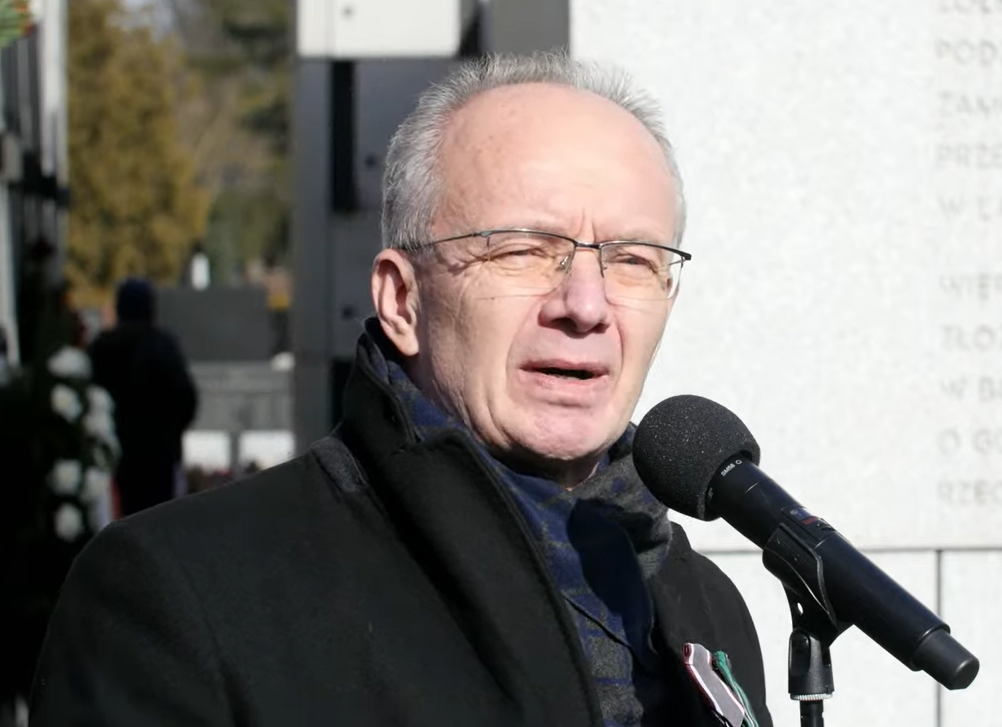
“The communists were afraid of the truth, they were afraid of the truth about the Cursed Soldiers, they were afraid of them, they were afraid of their return. But they came back many years after their death” – said vice-president of the Institute of National Remembrance, prof. Krzysztof Szwagrzyk during the ceremony in tribute to the Cursed Soldiers, which took place at the Powązki Military Cemetery in Warsaw – in the Ł. quarter (so-called Łączka), a place where the bodies of soldiers murdered in the Mokotów prison in 1948-1956 were secretly hidden.
The deputy head of the Institute of National Remembrance recalled the dramatic circumstances in which the bodies of those murdered in the Mokotów prison found themselves in Łączka. “When the echoes of the execution shots were heard years ago in the prison at Rakowiecka Street in Warsaw, when the nooses were removed from the necks of the convicts, the prison van was transporting their bodies here, to the Powązki Cemetery. Here, for many post-war years, the remains of over 320 convicts were hidden, including many Cursed Soldiers and for a long time of communism, Łączka was covered with successive layers of earth, asphalt, garbage, concrete, because the communist system made sure that nothing remained, no trace of those who were murdered and buried here” – said prof. Szwagrzyk.
“The first layer – the mid-1950s – soil one meter and a half high, brought here to Łączka and scattered over the entire area. The second layer is garbage from the cemetery garbage, which is located here in a fragment of Łączka. The third layer is the road on which at the moment we are standing, made in the middle of a prison field in the 1960s. And the fourth layer – the thickest, the heaviest – is the concrete from communist monuments built in 1982-84 here, in Łączka, when it was thought that the area of prison burials is ideal for make quarters for people who deserved for the communist people’s power here” – he enumerated.
The historian emphasized that “these actions, carried out deliberately for many years, show how much the torturers, the communists, were afraid of the truth, afraid of the truth about the Cursed Soldiers, afraid of them, afraid of their return. But they returned many years after their death. The Institute of National Remembrance found them here, found their holy remains, exhumed them, examined them, placed them in coffins, marked them with a prayer for the road, called them by name, made the sign of the cross on the shot through skull, but has not yet buried it”.
“After so many years, we cannot say that we have buried the Cursed Soldiers, that we have buried our Heroes. The remains of the Cursed Soldiers have been placed for some time in the space where we are now standing, a concrete structure with unknown symbolism, in a place that is called unlawfully The Pantheon, the Mausoleum of the Cursed Soldiers. We are slowly getting used to, I don’t want to say that we accept, that the Pantheon for the Cursed Soldiers are symbolic birch crosses set here somewhere in the area of Łączka. We are slowly getting used to the fact that the holy ground of Łączka, soaked with the blood of the Cursed Soldiers, is today ordinary soil on which grass grows” – the vice-president of the Institute of National Remembrance did not hide his regret.
Addressing those gathered at the ceremony, he quoted the words of the poet Przemysław Dakowicz, who wrote: “Let us remember to keep our eyes fixed on Łączka, because Łączka is Poland, because Poland is Łączka”. “Let’s remember” – finished his speech prof. Krzysztof Szwagrzyk.
Anna Wiejak
